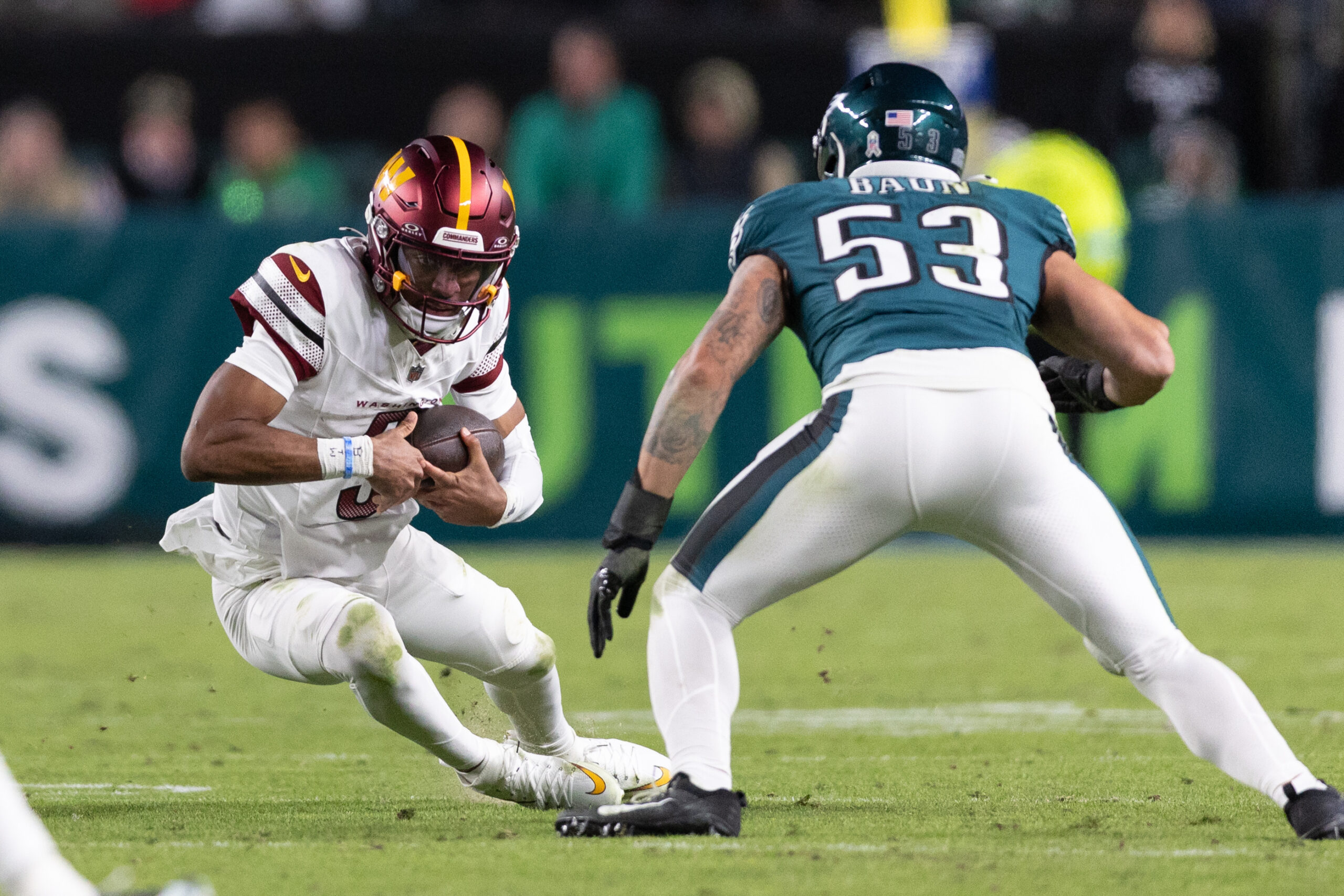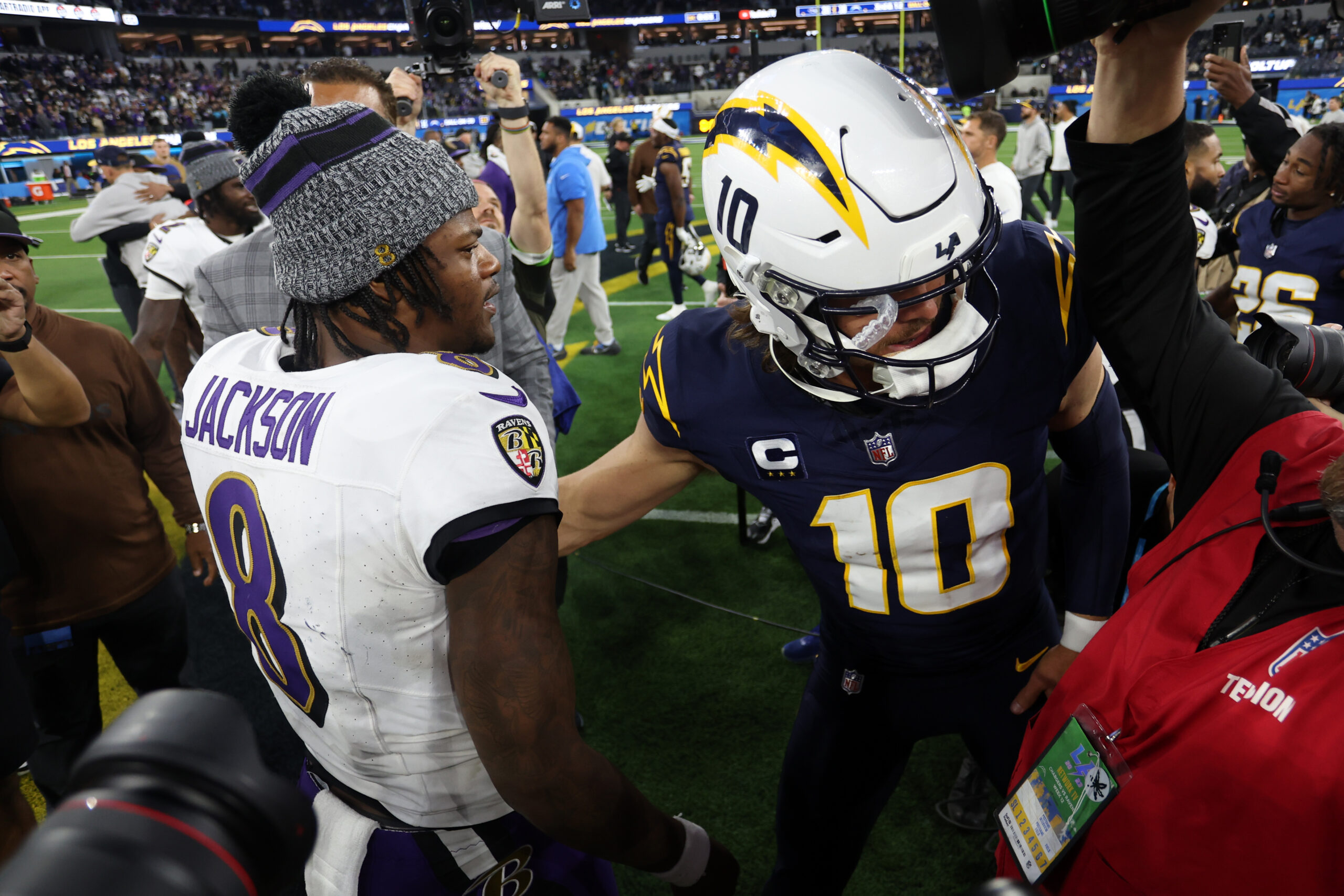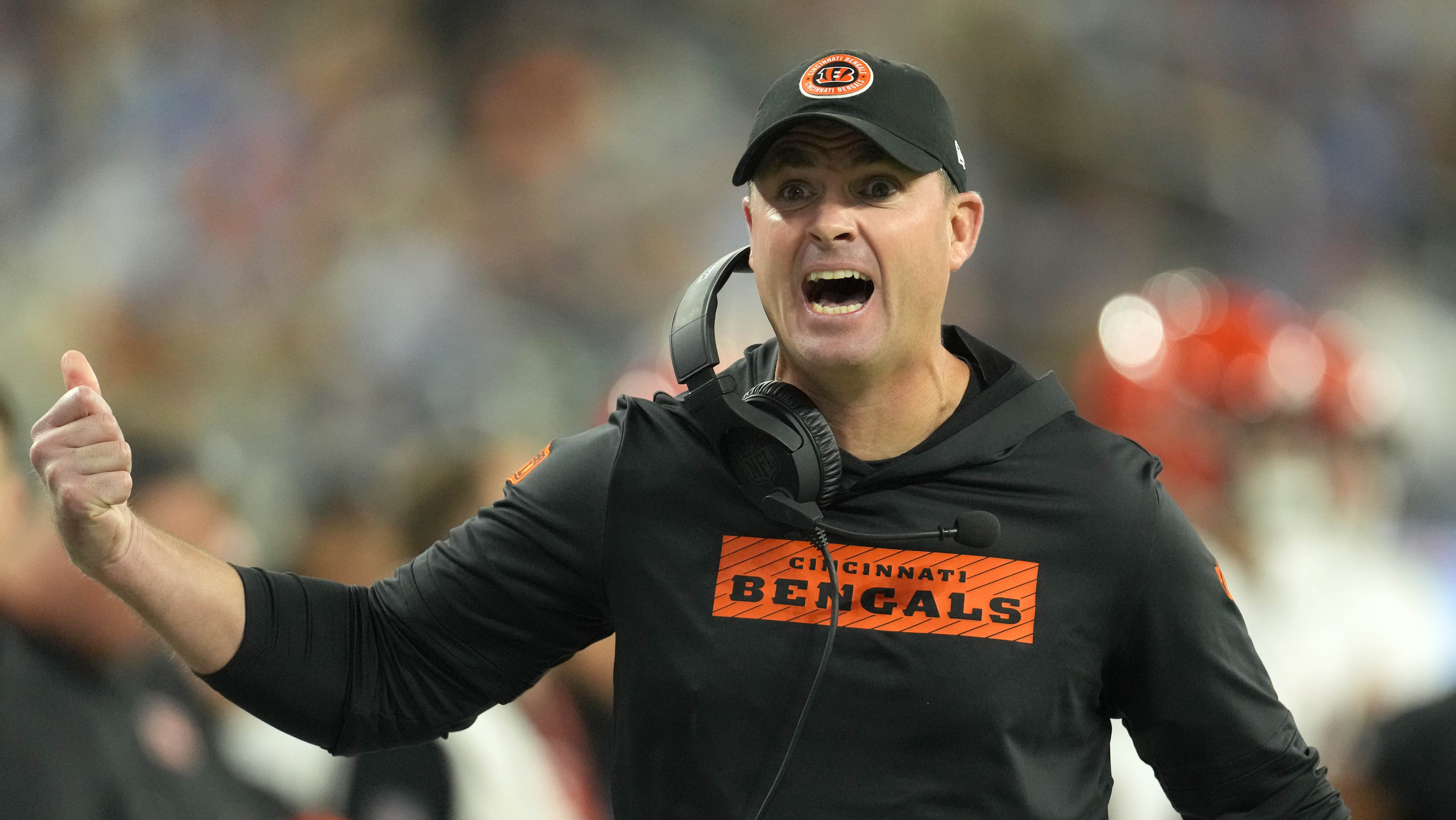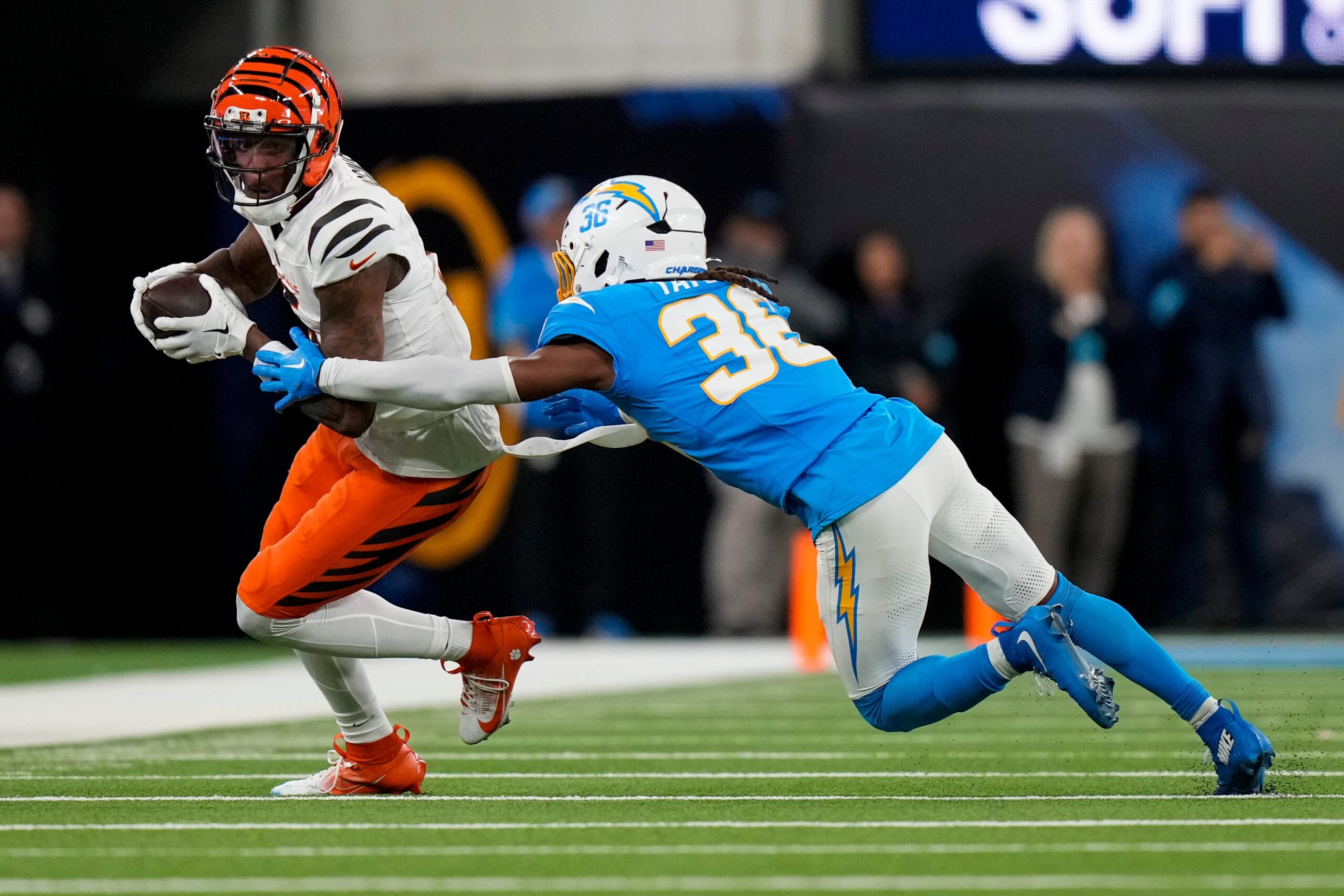NFL Analysis
10/21/24
21 min read
1st & 10 Week 7: Goff Delivers Under Pressure, Chiefs Man Up, Russell Wilson's Debut & More
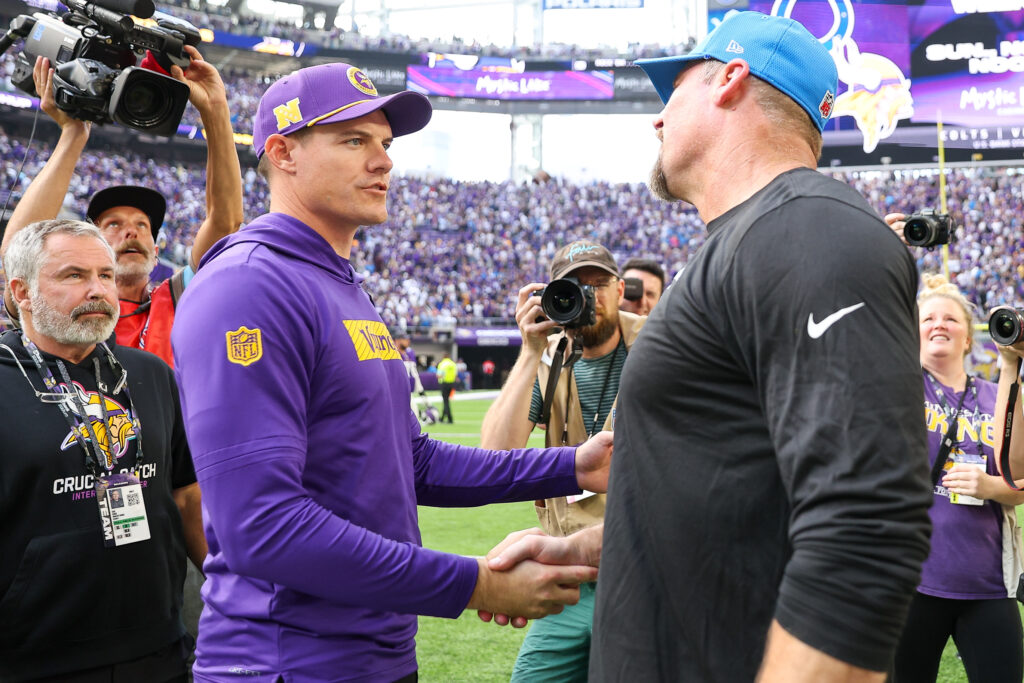
Each week, 1st & 10 will bring you an in-depth Monday morning breakdown of everything you need to know from Sunday’s slate of games.
We’ll fill this column with stats, film, and plenty of words to keep you covered on anything you might have missed or want to dive deeper into from Sunday.
All stats provided by TruMedia unless noted otherwise
1st & 10 NFL Week 7
1. Lions vs. Vikings was the game we wanted
A divisional showdown between the Detroit Lions and Minnesota Vikings pitted two of the league’s best teams through six weeks against each other. The game did not disappoint and cemented both teams’ status as potential contenders. With a 31-29 victory, the Lions handed the Vikings their first loss and took over first place in the NFC North.
The star of the game was Jared Goff, who has been on a heater during the past three weeks. Goff is averaging 0.58 EPA per play since Week 4. Lamar Jackson, the next-highest quarterback, has averaged 0.40 EPA per play in that span — though he still plays Monday night.
The key to this game was how well Goff held up against the blitz and the pressure from it. Last season, the Vikings blitzed Goff on 73 percent of his dropbacks. But as was the case with Minnesota at times last season, the pressure didn’t always get there. Goff was only pressured on 29.6 percent of those blitzes, and he handled it well.
Those blitzes came again, and so did the pressure. Minnesota blitzed Goff on 51 percent of his dropbacks and pressured him on 46.7 percent of them. Overall, Goff was pressured on 58.6 percent of his dropbacks against the Vikings in Week 7.
Goff’s biggest improvement in play this season is how he’s handled pressure. Going back to his Rams days, pressuring Goff was the way to get him to fold. But this season, Goff has been one of the league’s best passers when pressured. Through Week 7, he has the highest success rate under pressure among all quarterbacks.
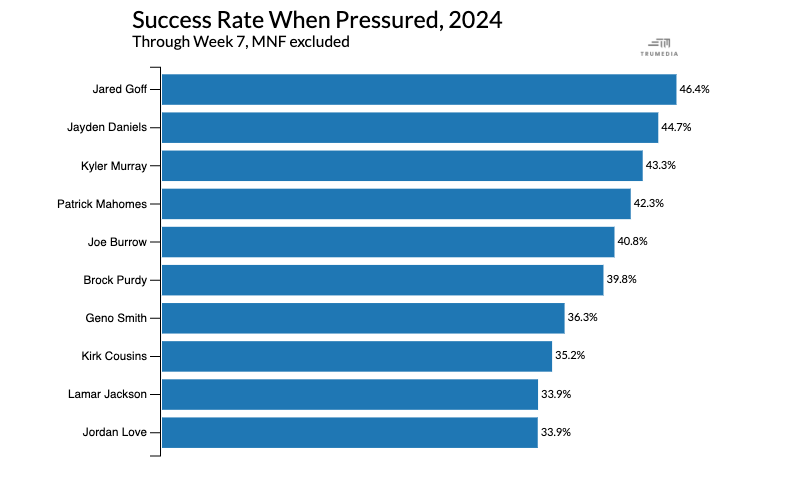
When pressured against the Vikings, Goff averaged 0.46 EPA per play and had a 52.9 percent success rate with an average depth of target of 10.6 yards and 12 yards per attempt.
The Lions were ready for whatever looks the Vikings gave and got Goff space in the pocket to get throws off.
On his first touchdown pass to Amon-Ra St. Brown, Detroit motioned Tim Patrick (17) across the formation as the offensive line slid the opposite direction as a way to make sure Minnesota did not get a free rusher, regardless of who came off the line. Goff took one step back, reset, and fired a deep pass to St. Brown for the lead midway through the second quarter.
That play also featured Penei Sewell getting his hands on Jonathan Bullard off the line and getting LB Ivan Pace to the ground to create the pocket for Goff to throw.
💪 @peneisewell58 moving people#DETvsMIN | 📺 FOX pic.twitter.com/kHs4VGP7tv
— Detroit Lions (@Lions) October 20, 2024
On a third-quarter touchdown to Kalif Raymond, the Vikings only sent four, but Jonathan Greenard (58) pushed left tackle Taylor Decker into the quarterback’s lap.
Still, Goff stood strong and found Raymond on a crosser after the receiver got Stephon Gilmore to fall down with a move off the line of scrimmage.
Goff's confidence and control in the pocket have been a difference-maker this season.
It wasn’t the lone standout. Detroit was trailing early in this game after a poor first series and a fake punt that did not come close to converting. The Lions didn’t score until the second quarter, and that came on a wild run from Jahmyr Gibbs, who finished with 116 yards and two touchdowns on 15 carries.
Even if Detroit's level of success against the Minnesota defense that had embarrassed and confused every offense it had played the season might have been a surprise, we’ve seen the Lions’ offense play well. The biggest question going forward was going to be about the defense without Aidan Hutchinson.
The Lions blitzed on 33.3 percent of their defensive dropbacks after blitzing 28.3 percent of the time through Week 6. Most of the blitzes against Minnesota came on third down, with Detroit blitzing 60 percent of the time. Five Lions had at least two pressures in this game, but only Alim McNeil had more than that with three.
Sam Darnold was pressured on 34 percent of his dropbacks, and he took four sacks — all of which came in the second half. The Lions manufactured some things up front, but the secondary made the plays — namely Brian Branch, who continues to shine all over the field.
Branch had an interception of Darnold in the second quarter, jumping in front of Jordan Addison.
The pick set up a 72-yard touchdown drive for the Lions to go up 21-10 at halftime after trailing 10-0 to start the second quarter.
Darnold still went 22-of-27, and the Vikings had an easy time picking at the middle of the field, targeting linebackers and slot corner Amik Robertson.
On a Justin Jefferson touchdown in the third quarter, the Vikings had Jefferson in the slot lined up against Robertson on a third down — expecting a blitz and man coverage as Aaron Glenn has favored. Before the snap, the Vikings motioned Addison just inside Jefferson, who then had plenty of space to work for a fade in the end zone while working against a smaller corner.
That Jefferson touchdown made the game 21-17, and the two teams went back and forth. Later, the Vikings took a 29-28 lead on a David Montgomery fumble returned for a touchdown by Ivan Pace.
Yet, the Lions got a 44-yard field goal from Jake Bates with 15 seconds left to win the game.
Both teams proved why they’ve been among the best this season. This could be a long battle for the top of the division, which could also be the top of the conference.
That could come down to when we get this game again — Week 18.
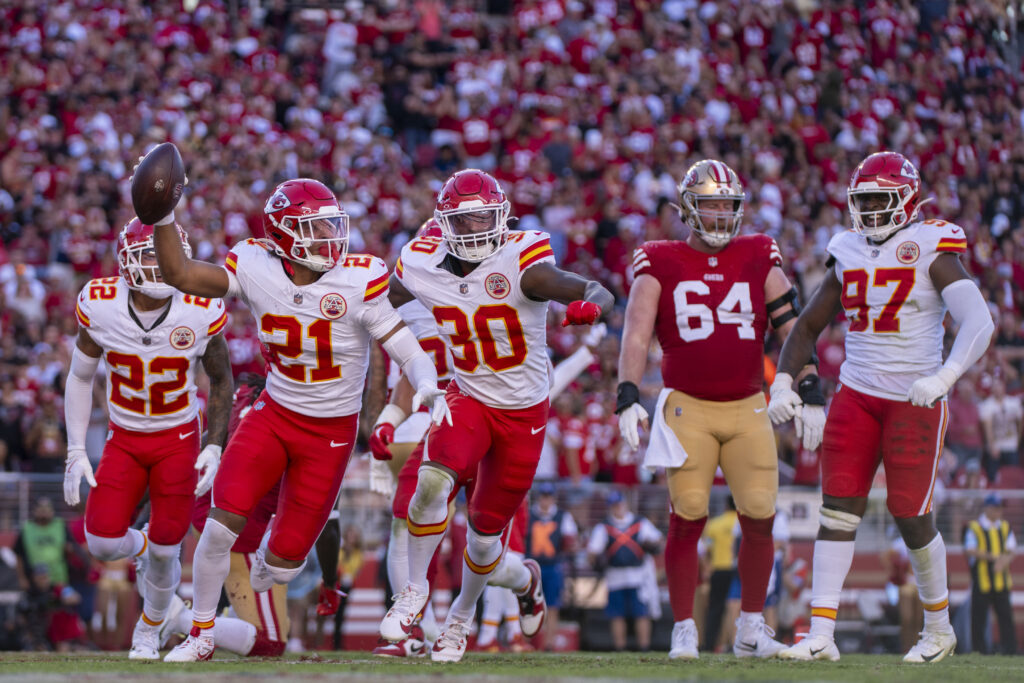
2. This is who the Chiefs are, and that’s ok... FOr Now
These are not the Kansas City Chiefs we’re used to seeing. At this point, we need to let go of our expectations for a high-scoring, explosive offense and accept the reality of a successful but plodding offense matched with a defense that can take over a game.
That was the formula in Kansas City’s 28-18 win against the San Francisco 49ers.
The Super Bowl rematch saw two teams that didn't resemble the two teams we watched play in Las Vegas.
San Francisco’s changes played into exactly how Kansas City wanted to play on defense. After Chiefs defensive coordinator Steve Spagnuolo spent the week praising Brock Purdy and the lack of weaknesses in the quarterback’s game, the Chiefs went after him.
The Chiefs blitzed on 29.7 percent of Purdy’s dropbacks, but they were more aggressive in coverage, playing man coverage on nearly half (14-of-31) of Purdy’s pass attempts, according to Next Gen Stats.
Opposing defenses have played man against Purdy and the 49ers at a higher rate this season, with receivers in and out of the lineup and Christian McCaffrey yet to see the field. Purdy has been fine with that, holding onto the ball and throwing deep down the field into tight windows.
That was not how things worked against the Chiefs, as Purdy threw three interceptions and took a sack when Kansas City played man.
The first interception came against single-high while targeting George Kittle on a crossing route. Safety Justin Reid read the play the entire way and easily jumped in front of the pass for the pick.
That came off play-action, which the 49ers have used less of this season. They’ve allowed Purdy to handle more of the straight dropback game, but they went back to play-action a bit to get something going against the Chiefs with the lack of playmakers available.
Jauan Jennings did not play, and Deebo Samuel had an illness coming into the game and left early. Brandon Aiyuk was lost to what is feared to be a torn ACL.
But when the 49ers went to play-action, the Chiefs were all over it. Purdy was 2-of-5 for 14 yards while throwing off play-action with a sack, an interception, and a few scrambles.
He averaged -0.67 EPA per play and 2.8 yards per attempt, his worst rates off play-action in his career.

Perhaps Purdy’s two worst throws ended up being completions, but they were poorly placed, which took potential points off the board.
Purdy had a deep throw to Kittle that went for 41 yards. However, Kittle had the defender beaten and had to come back to an underthrown pass that brought the defender into the play. The 49ers eventually settled for a field goal on the drive.
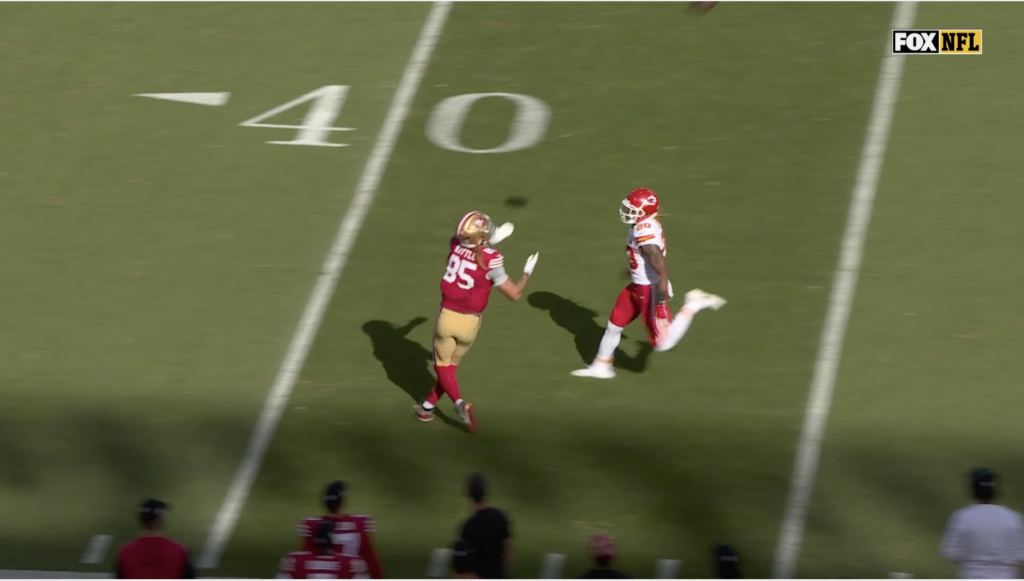
In the fourth quarter, Purdy had another deep shot to Jacob Cowing for 41 yards. Again, the ball was left short, and Cowing had to come back for it, falling to the ground while he was behind the defender.
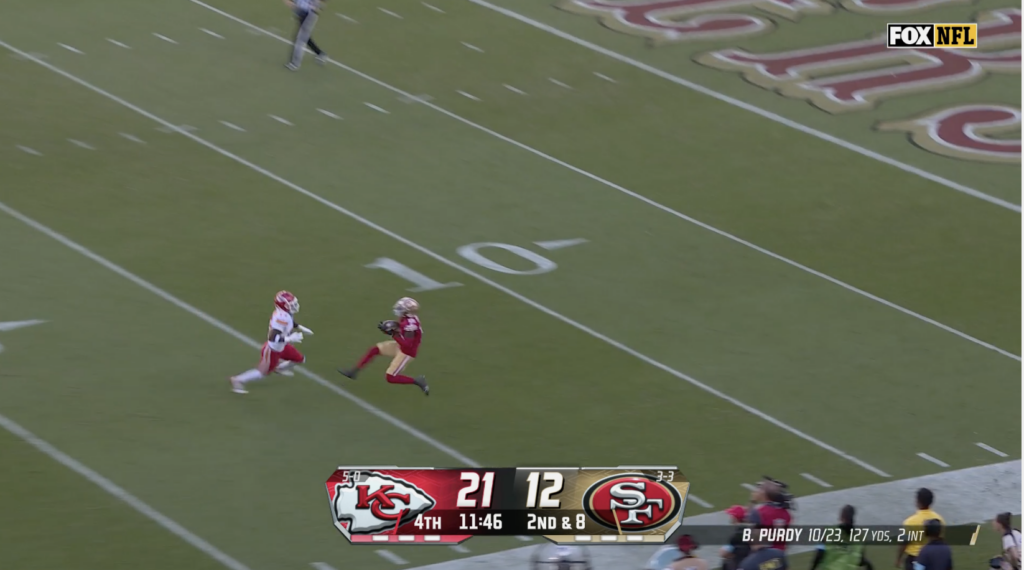
Purdy threw an interception in the end zone two plays later.
Meanwhile, the Chiefs offense did enough and figured out how to move the ball. Although Mahomes only averaged 0.04 EPA per play and 5.7 yards per attempt, he finished with a 50 percent success rate, the second-highest rate of the week.
That’s been the Chiefs’ M.O. this season, just enough to be successful and keep things moving. Mahomes now has more interceptions (eighth) than touchdown passes (six), but he’s also still third in success rate (50.4 percent).
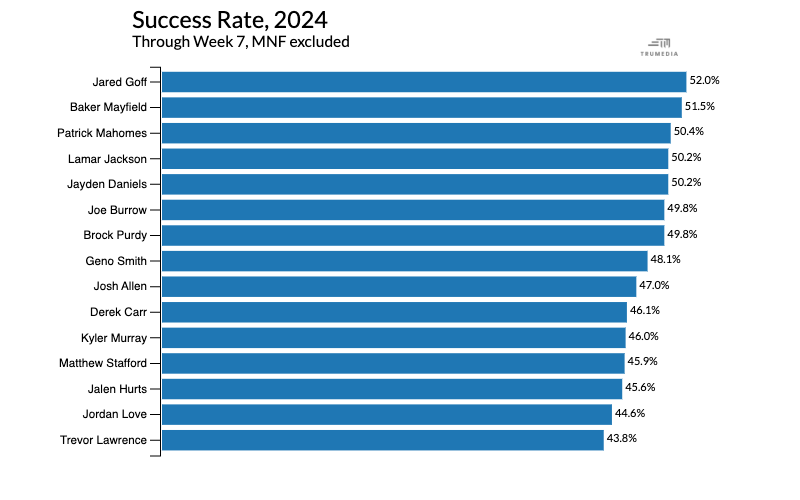
The extreme high-level plays aren’t always there, but the right play is taken more often than not. It’s not sexy, and now it leads to more Noah Gray targets and Mecole Hardman jet sweeps.
That said, it's a formula that can work and has led the Chiefs to a 6-0 record following a Super Bowl win.
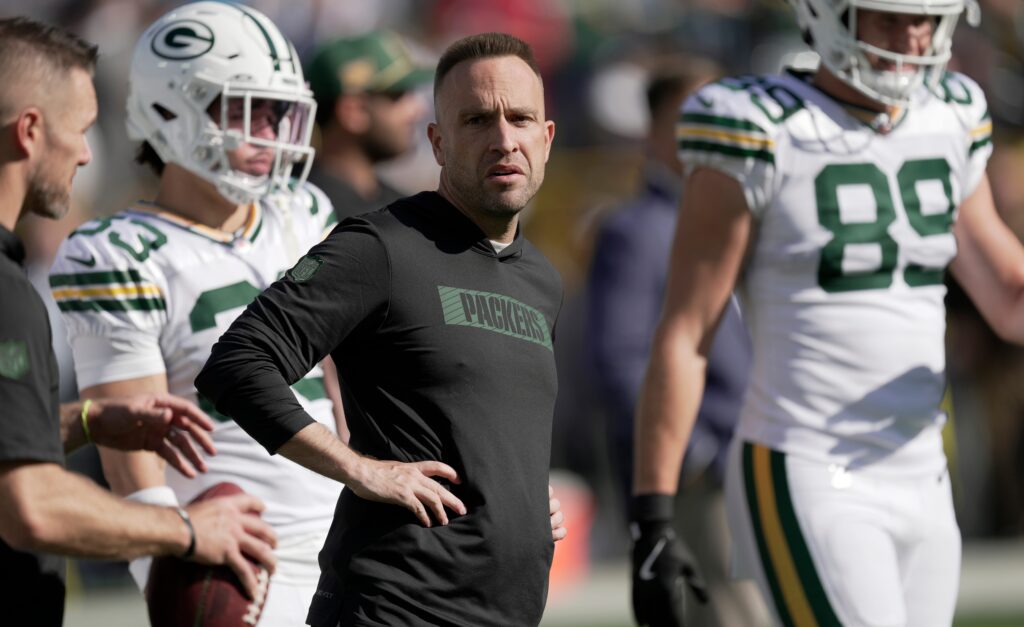
3. Packers Got Pressure
Outside of turnovers, the Green Bay Packers defense hadn’t completely clicked under new defensive coordinator Jeff Hafley. There were some signs of life in the pass rush late last week against the Arizona Cardinals, but it was firing on all cylinders in a 24-22 win against the Houston Texans.
The Packers pressured C.J. Stroud on 51.7 percent of his dropbacks in Week 7. When pressured, Stroud went 3-of-10 for 14 yards with four sacks.
This was the ninth-highest pressure rate for the Packers in a game in the past five seasons and the fifth-highest not to come against the Bears.
Houston’s offense was overwhelmed from the start. On a Rashan Gary sack in the first quarter, Laremy Tunsil fell down off the snap, and Gary had a free go at the quarterback.
GARY GETS TO HIM!#HOUvsGB pic.twitter.com/5un6Iv5Yef
— Green Bay Packers (@packers) October 20, 2024
Green Bay created free rushers that Houston was not ready to block.
The Packers did not blitz once on early downs but sent an extra rusher on 41.7 percent of Houston’s third down dropbacks.
Houston continued to make opposing defenses' jobs easier on early downs by staying committed to a run game that has not worked. On first downs in this game, the Texans threw just 28 percent of the time and had a 23.1 percent success rate due to a run game that averaged 2.9 yards per carry.
Even though the Texans weren’t always in third-and-long in this game, the third downs were long enough for the Packers to send those blitzes and get home. Stroud made some great throws early in the game, but the weight of what he was asked to carry became too much as the Packers were consistently in the backfield.
Without pressure, things were still frantic for the Texans. On plays when he wasn’t pressured, Stroud averaged 0.36 EPA per play, the fifth-best mark of the day, but that was partially due to a 21.4 percent scramble rate.
Green Bay's defensive performance bailed out an offense that was up and down for much of the day. Jordan Love ripped some throws, like the incredible touchdown to Tucker Kraft:
There was also the nice touchdown down the sideline to Dontayvion Wicks:
But Love threw two picks, took three sacks, and finished with negative EPA on the day.
There’s been some high-variance play with Love lately, but the high-quality play is more than enough to make up for some of the forced mistakes. If the defense continues to make high-leverage plays with interceptions and sacks, the Packers could have a complementary football team with big plays on both sides of the ball.
That could bring some incredible highs if they come at the same time.

4. Bills offense got going
Amari Cooper only ran 11 routes in his Buffalo Bills debut, but it was clear what his impact could be on the offense in a 34-10 win against the Tennessee Titans.
Cooper was targeted on 41.7 percent of his routes, so when he was out there, the Bills were trying to get him the ball. His 66 receiving yards on five targets and four receptions were his second-most of the 2024 season. He also had a reception of 20 or more yards after only having two of those before this week.
That play was one of the most positive, as Cooper found a hole in the zone by drifting away from a linebacker to create a better throwing lane, and Josh Allen eventually found his newest receiver for a 27-yard gain.
On Cooper’s touchdown, he needed to be told by rookie Keon Coleman what route he was supposed to run, but it worked out on a four-verts call against a zero blitz. Cooper now gives the Bills an immediate matchup advantage for these kinds of calls in the red zone.
With Cooper in the fold, everyone else in the offense can get moved into a more suitable role. Khalil Shakir has been one of the league’s most efficient receivers, but now he can stay more in the slot and won’t have to be the No. 1 target when the Bills need a big play — though he can be.
The tight ends can move around a bit more. Coleman should see more 1-on-1s on the outside, and hopefully, the Bills move him inside a bit more to use his size as an advantage there in the same way he did on the slant for a 57-yard gain in the fourth quarter.
Coleman finished with 125 yards, most of those without Cooper on the field.
The Bills have been figuring out the offense and have different ways to win. The running game is a weapon whether James Cook or Ray Davis is carrying the ball. However, the Cooper addition will things up for the passing game and give a receiving option that opposing defenses have to concentrate on stopping.
There was just a small preview in Week 7, and the results were already positive.

5. Trevor Lawrence Had His best day
There was a possibility the Jaguars would leave their London trip with a new head coach. Instead, after a 32-16 win against the New England Patriots, the Jaguars will come back stateside with their best showing of the season and one of Trevor Lawrence’s best games as a pro.
Lawrence averaged 0.61 EPA per play in Week 7, easily the highest of the week and easily the highest in a game in his career. His 59.1 percent success rate was his third highest.
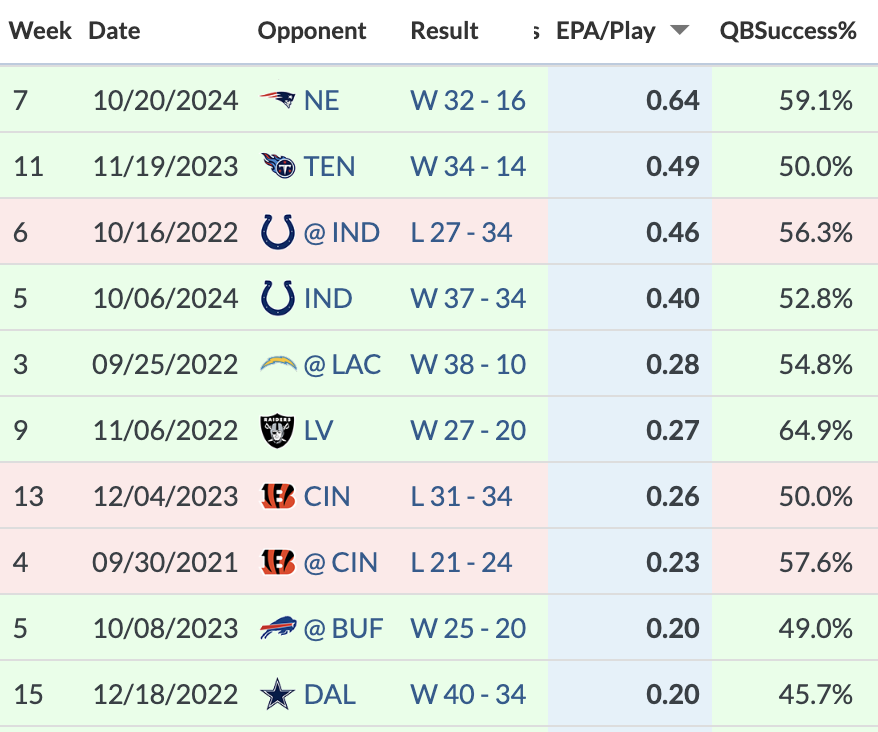
Lawrence only threw 20 times, so it wasn’t a high-volume game, but the Jaguars mixed in the best of all worlds for what they’ve been trying to accomplish on offense.
His average time to throw was just 2.21 seconds, which worked the quick game the Jaguars have been relying on so often to help the offensive line (Lawrence was pressured on just 9.5 percent of his dropbacks).
He also used play-action on a career-high 36.1 percent of his dropbacks, only throwing deep twice but connecting on both for 82 yards.
There was a rhythm and control to the offense that allowed Lawrence to operate comfortably. He completed 75 percent of his passes, and just one was charted as inaccurate — something that has been an issue all season.
Hopefully, there’s something to take away from this game, and the Jaguars can build on it going forward. The best option is probably for a clean break from this coaching staff after the season, but the more that can be done to prove there is plenty of good play in the quarterback before that happens is a great thing.
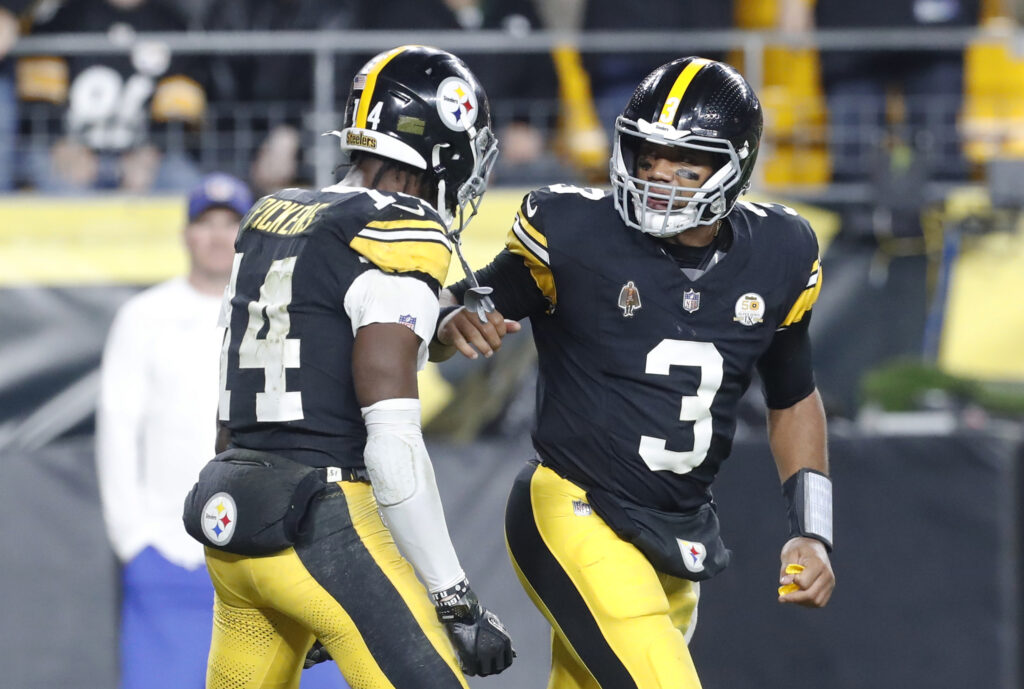
6. Russ makes a strong debut
Russell Wilson might be just what the Pittsburgh Steelers need. It’s not that Wilson is still a great quarterback or that the Steelers have some amazing offense just waiting to be unleashed, but the current Wilson-ball fits perfectly with the strengths of George Pickens, and everything else can build off that.
One of the negatives for the Justin Fields version of the Steelers offense was the lack of big plays. Fields had done a great job with limiting turnovers early in the season, but the high-value plays weren’t there.
It didn’t take long for Wilson to change that up. For whatever skills have diminished from Wilson, his deep ball still works, and he’s willing to throw it. He wasn’t pinpoint when targeting Pickens, but all that receiver needs is a ball generally in his area, and he can get his hands on it.
Wilson’s willingness to go deep and Pickens’s contest catch ability might just be a match.
In his first start, Wilson finished with 0.31 EPA per play, the fourth-highest of the week, and a 20 percent explosive pass rate. Fields’ highs for the season were 0.00 and 15.8 percent, respectively.
Wilson was under center for 62.1 percent of his plays, a significant rate and his highest since the 2013 season, his second in the league.
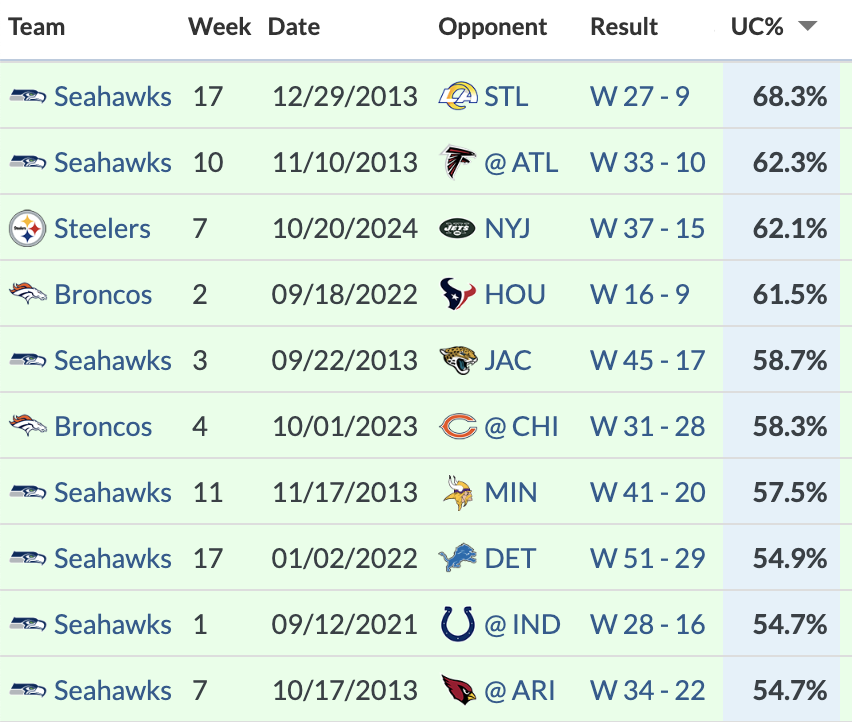
There were still some negatives from Wilson in a 37-15 win against the Jets, but he was better than Fields was during the first six weeks of the season, and the version of Wilson we last saw in Denver.
It might not stay that way, but it won’t have to. A few big plays on offense matched with a defense that can hold opposing offenses and force takeaways is exactly the formula Mike Tomlin used for years.
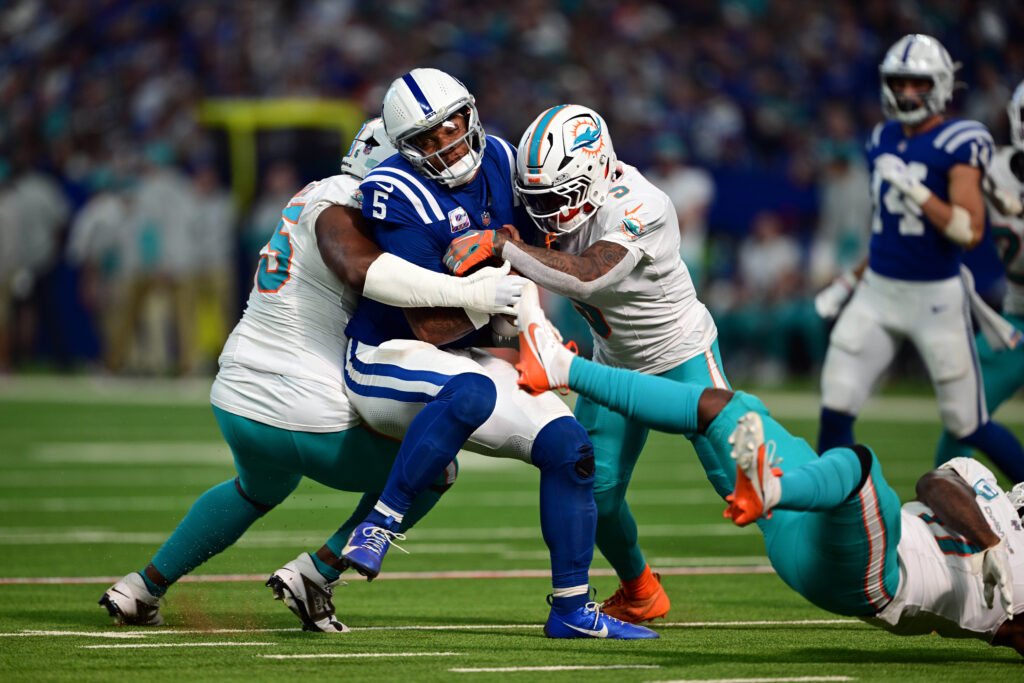
7. Richardson's Return Looked Familiar
The Indianapolis Colts squeaked by the Miami Dolphins with a 16-10 win in Anthony Richardson’s return to the lineup. The return looked more of the same as when Richardson played earlier in the year.
Richardson finished the game completing 41.7 percent of his passes with a 10-yard aDOT. That was passable at times during the first few weeks because the big plays were hitting, and that value was enough to make up for the down-to-down inconsistency.
Without those, it just looks like ugly football. He was 4-of-10 on throws of 11 or more air yards against Miami.
There are easier throws to be made in this offense — we’ve pointed out the differences between where Richardson and Joe Flacco threw — and it’s time Richardson takes advantage of those throws and gets more comfortable in the short area. Just 55 percent of his passes this season are under 10 air yards, the lowest rate in the league, with the next-lowest at 62 percent.
Even with all of Richardson’s physical tools, it’s impossible to live that way as a quarterback. We saw something similar from Josh Allen as a rookie.
He developed comfort in the short area, and at this point in his career, his patience has become a strength. Richardson has not gotten there yet, and the sooner he does, the better for his development and the Indianapolis offense.
8. Chart of the day
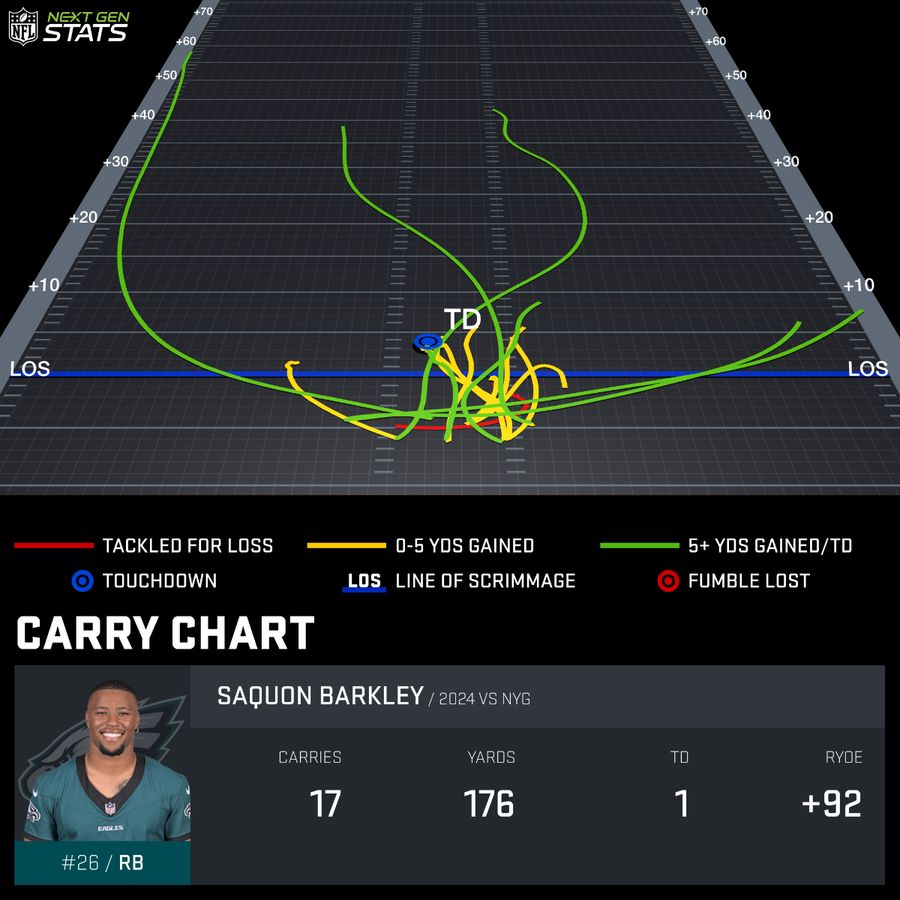
Saquon Barkley rushed for 176 yards and a touchdown against the New York Giants. It could have been more, but Barkley was taken out of the game in the fourth quarter with a big lead.
This isn’t here just to point out what Barkley did against his former team — it clearly felt good to do so, as the Giants only managed 119 yards as a team — but it’s more about how important Barkley has been to this offense.
On a day when the passing offense struggled and Jalen Hurts took four early sacks, Barkley was the engine that kept the Philadelphia offense going and allowed the Eagles to build an early lead.
It’s hard to imagine what this offense would have looked like in this game with a worse back, and it’s been that way for the whole season.
9. Play of the day
A week after we gave an update for the new kickoff, with fairly positive results, we got another return touchdown.
Charlie Jones returned the opening kickoff 100 yards for a touchdown, giving the Bengals an early lead in an eventual 21-14 win against the Browns. This week, 31.9 percent of kicks were returned, just at the full season average of 32 percent.
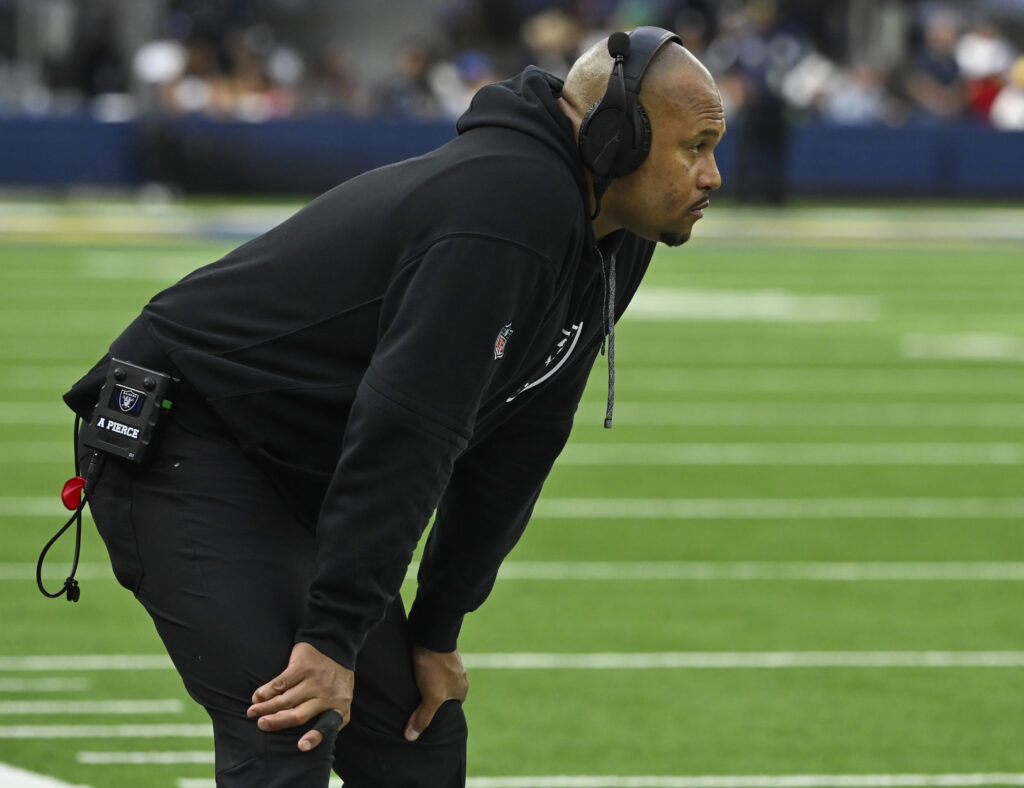
10. What are the Raiders right now?
There are teams in unenviable positions for the long term.
The Saints, after a promising start to the season, have nosedived and their cap management might finally catch up to them with potential multiple years of a rebuild and cap cleaning ahead. The Browns just lost Deshaun Watson for at least the rest of the season and will now face the question of how to handle the league’s worst quarterback and a guaranteed contract with injury insurance.
It’s OK to disagree with those team-building philosophies at the time — they were bad — but at least there was an idea behind them. That brings us to the Las Vegas Raiders, who now sit at 2-5 and are tied with the league’s third-worst point differential at -56.
Las Vegas didn’t have a clear direction going into the season. Stars like Davante Adams and Maxx Crosby were on the roster, but there was a lack of talent elsewhere. They signed Christian Wilkins to a big free-agent contract to add to a defense that finished the season strong but then only signed Gardner Minshew to fill in at quarterback.
Minshew won the job, got benched after Week 5, but returned in Week 7 with an injury to Adian O’Connell. Wilkins is out indefinitely with a Jones fracture, and Adams was traded to the Jets. Few things serve a coherent purpose for the Raiders — much like rookie head coach Antonio Pierce’s fourth down decisions so far.
The Raiders will have $124 million in cap space next season but only 33 contracted players, including Minshew.
Las Vegas has a chance to reset the franchise, but they have to either accept or at least understand what they are and what they’re trying to be.
The Raiders half-measured their attempt to compete, which left them worse off and without a clear path forward. A rational team would take this time to reset. We don't yet know if the Raiders will.

